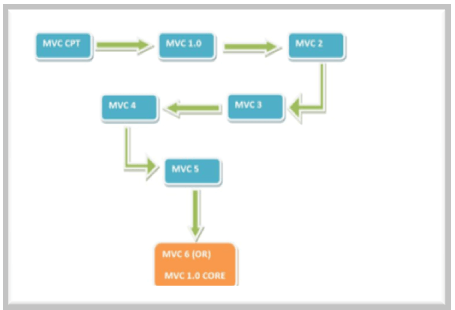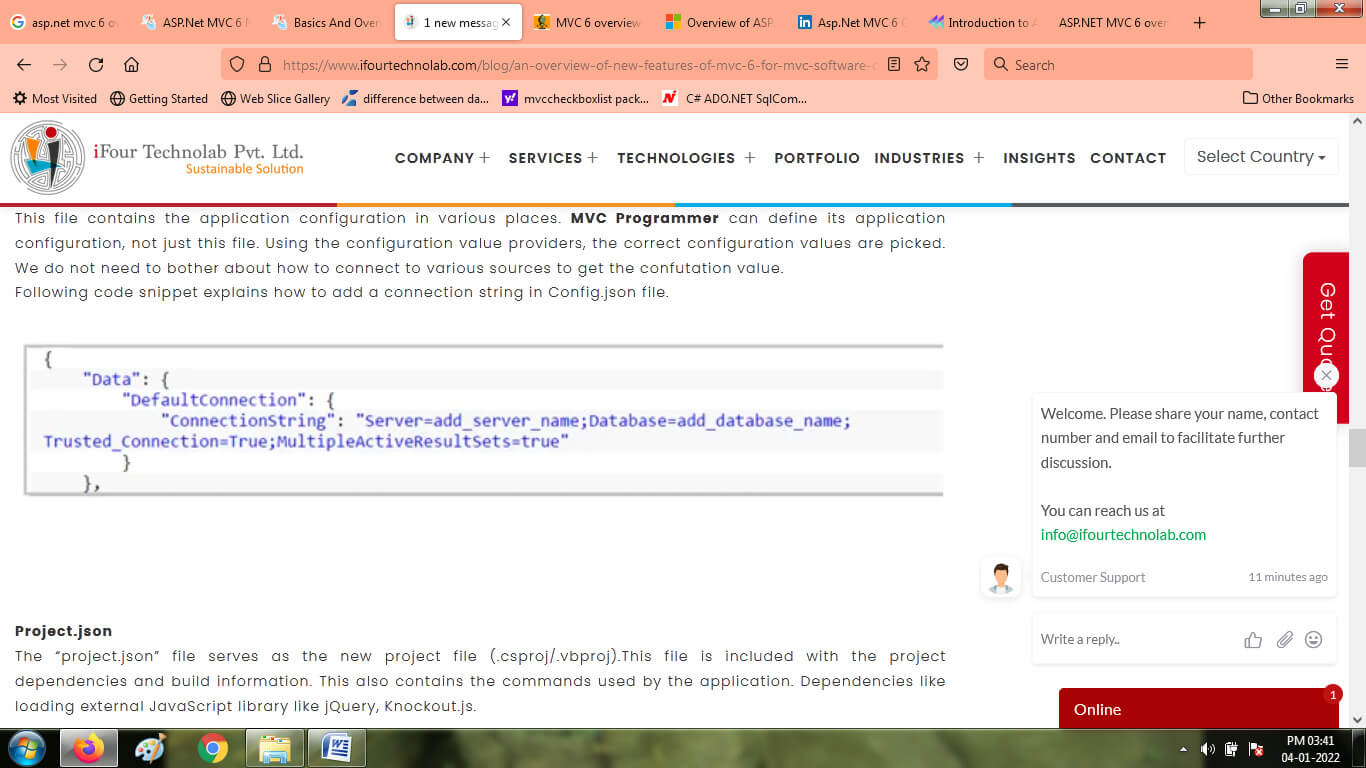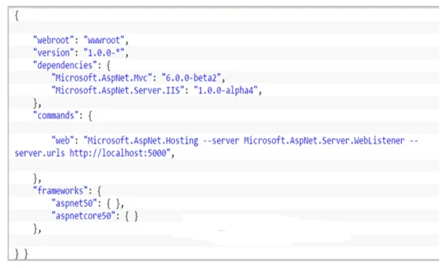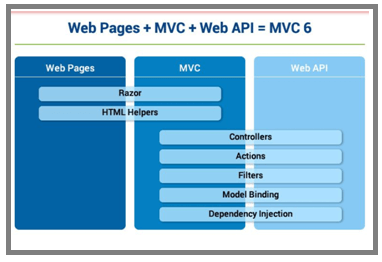Updated February 21, 2023
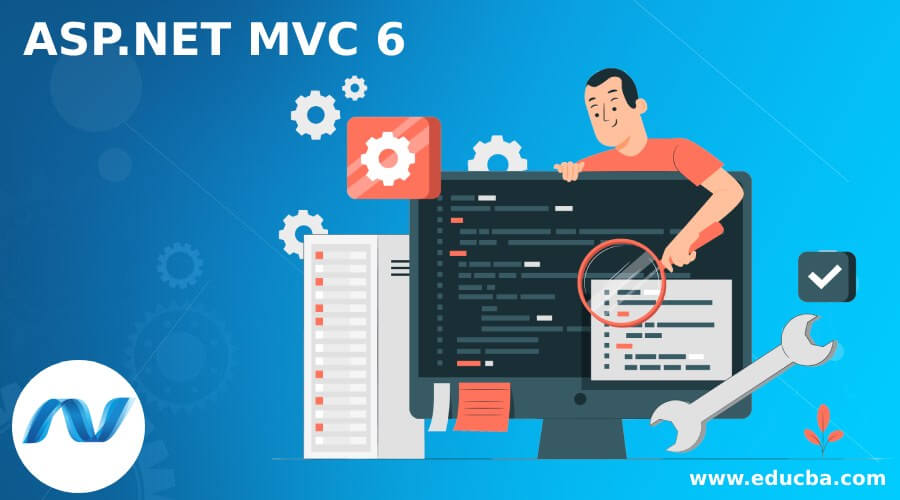
Introduction to ASP.NET MVC 6
ASP.NET MVC 6 is mainly designed for Cloud-Optimized Applications and is rich in developing Web Apps and APIs using Model-View-Controller design patterns. The MVC application is deployed to the cloud the runtime automatically selects the exact version of the library. Using the Roslyn Compiler no need to compile the application; it automatically selects the application’s code.
ASP.NET MVC 6 overviews
ASP.NET MVC 6 is an Open-Source .Net Framework the essential thing in this framework is it builds the frameworks into a single one by merging the frameworks of WebPages, MVC, and Web API. Moreover, ASP.NET MVC 6 is a Cross-Platform and Compatible Framework; it supports Mac, Linux, and so on. Therefore, it increases the reputation among the many eminent.
ASP.NET MVC 6 is rich in developing Web Apps and APIs using the Model-View-Controller design pattern.
New features ASP.NET MVC 6
- Removal of System.Web.Dll dependency– in MVC 6, the dependency of System.Web.Dll is removed because it consumes 30k memory per request and response, whereas MVC 6 requires only 2k of memory per request and response.
- Single Controller for Web API and MVC- in MVC – there will be only one Controller base class for Web API and MVC like Microsoft.AspNet.MVC.Controller. The Controller Class for MVC (System.Web.MVC.Controller) and Web API (System.Web.Http.ApiController) are merged into a single class.
- MVC 6 returns an IActionResult the same Controller has the actions which return Data and Views. In contrast, in the Web API Controller, the IActionResult is the data like the employee list, and in the MVC Controller, the IActionResult is the view. The MVC 6 contains both in a single Controller. In MVC 6, the same routers are used for both Web API and MVC Controllers.
- Supports hosts in addition to IIS- in MVC 5, we can host on IIS Server and execute on ASP.NET Pipeline. In contrast, MVC 6 is self-hosted, a flexible pipeline that could be controlled entirely by the components of the pipeline.
- Configuration System Environment Based- in MVC 6, the configuration system environment enables the application to deploy on Cloud easily; the application works as Configuration Provider. MVC 6 eliminates the dependency on the Web.Config file retrieves the values from different configuration sources like XML File.
- Complier Roslyn- it is the new compiler Roslyn Compiler which compiles the application code automatically. Using the Roslyn Compiler, any MVC developer can modify the code file and observe the changes by refreshing the browser without rebuilding or stopping the project.
- Cloud Optimized Application- MVC 6 is mainly designed for Cloud Optimization. When the MVC application is deployed into the cloud, it automatically selects the exact version of the library dynamically. Also, the state of the session and cache get altered depending on the hosting environment.
- Dependency Injection- NET developers can add their dependency injection using the IServiceProvider interface, and one can alter the default implementation with their container.
- OWIN Supports- in MVC 6, there will be OWIN abstraction; we have the MVC 6 Application control with the compostable pipeline.
- NuGet Packaged- in the MVC 6 application, there will be NuGet Packages entirely; there is no assembly like the previous version. Instead, the developer needs to add the NuGet Package, and the entire dependent packages will be added automatically by the framework.
- Side-by-Side Deployment – in MVC 6, developers can upload dependencies to the bin directory without affecting the other applications on the same server.
- JSON Based Project Structure-MVC 6 contains global.json, Config.json, and project.json for various Configurations.
ASP.NET MVC 6 Model
ASP.NET MVC 6 is a Cross-Platform and Compatible Framework; the essential thing in this framework is it builds the frameworks into a single one by merging the frameworks of WebPages, MVC, and Web API. Moreover, it is rich in developing Web Apps and APIs using Model-View-Controller design patterns.
There will be dependency injection entirely in the MVC 6 and ASP.NET 5, with both Web API and MVC available on the same request pipeline. Let’s see the Modal Binding in MVC 6 as shown below,
public class MemberDetails
{
[FromHeader]
public int MemberId { get; set; }
public string Member_FirstName { get; set; }
public string Member_LastName { get; set; }
public string Member_Address { get; set; }
}We get the Modal-Binding from the Http Header up to post. We can also make use of FromServices attributes. Modal Binding will be the same in Web API.
Important ASP.NET MVC 6
Global.json– this is packed with solution-level settings and references with a project to project.
Scr Folder– this source folder is the source code for the web application.
wwwroot– this folder consists of the Static Files and the other files the Web Apps serve directly to consumers, including the HTML, JavaScript Files, CSS, Images, and so on.
Config.json-it contains the application configuration in various places; the MVC developer defines the application configuration; by using the configuration value providers, we can select the exact configuration values. No need to worry about connecting with different sources to get configuration values. Let’s see the coding snippet which shows how connecting the strings in the Config.json file,
Project.json- this files serves the new project file(.csproj/.vbproj). This includes the project dependencies and building the information. It contains the commands used by the application. It contains the dependencies like loading the external JavaScript libraries like knockout.js, jQuery, etc.
These files provide the intellect packages availability while the developers add or edit the dependencies. When removing the packages, it automatically removed from the other project references.
Startup.cs – it is the entry point for the application. It is used to define the environment for the application. The host looks at the Startup class with a configure method that takes IApplicationBuilder as a parameter.
Define Request Pipeline- the startup.cs contains the startup method
The code above builds an object for the configuration class. We can include the environment variables and config.json as the source of values in the configuration. In MVC 6 application, we can move to the cloud.
ASP.NET MVC 6 Attribute
There are a few attributes in this ASP.NET MVC-6; let’s see the following attributes below,
- Asp-Controller- it provides the name of the Controller
- Asp-action– it provides the Action Name of Controller Class
- Asp-for– this attribute is mainly used for the Model Binding
- Asp-Validation-for-this attribute used for validations in Model
- Asp-validation-summary– this attribute is used for showing the summary invalidations
Examples
ASP.NET MVC 6 is essentially designed for Cloud-Optimized Applications and is rich in developing Web Apps and APIs using Model-View-Controller design patterns. Using the Roslyn Compiler no need to compile the application; it automatically selects the application’s code.
Conclusion
In this article, we have learned about the attributes and new features of MVC-6 and explained the overviews of ASP.NET MVC-6, also called the MVC Core 1.0. Hope the article helps you to understand.
Recommended Articles
This is a guide to ASP.NET MVC 6. Here we discuss the attributes and new features of MVC-6 and also explain the overviews of ASP.NET MVC-6. You may also have a look at the following articles to learn more –
